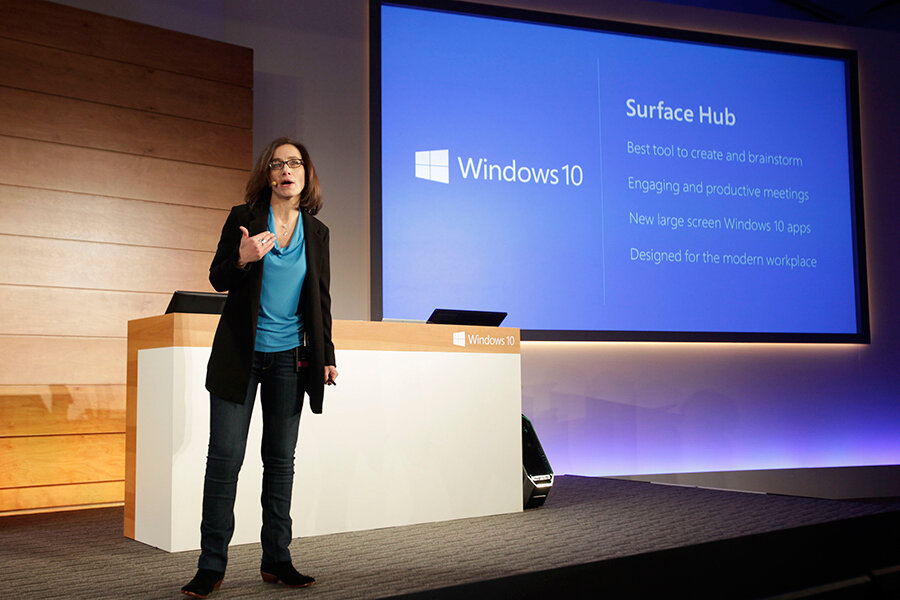Could Microsoft's humongous touchscreen make meetings bearable?
Loading...
It's 2015. Why are meetings still so awful?
If Microsoft is correct, it's because of the various buggy devices that don't talk to each other: Conference calls get dropped, you don't have the right cable to hook your laptop up to the projector, and screen-sharing works only with some browsers.
Microsoft's Surface Hub aims to solve all that, by bringing everything together on one giant screen.
Part blackboard, part tablet computer, and part flat-screen TV, the Surface Hub is described as a “large screen collaboration device” by the company.
On Wednesday Microsoft announced the latest Surface can be ordered in 24 markets starting July 1 and comes in two versions. The 55-inch screen is $6,999 and the 84-inch model is about the price of a fully loaded Toyota Corolla at $19,999.
A review on Engadget described the Surface Hub as this: “If you've ever wandered into your company's boardroom, unsure how to work the assortment of teleconferencing gear, you needn't fear here: If you can pick up the pen, you can get to work immediately.”
This appears to be true. The Surface Hub, which runs on Windows 10, does not require a login; to start a meeting you just tap the screen. If people are calling or video chatting in, they can be added at any time via Skype for Business. At the end of the meeting, notes are cleared from the screen and sent to attendees. In this way the Surface Hub is not so much a giant tablet as a gigantic piece of sleek hardware: all surface, no memory.
The editor-in-chief of PCMag.com, Dan Costa, wrote in a review of the Surface Hub that his biggest takeaway was, “we have to get one of these.”
At a time when more and more jobs can be done remotely, and ever-smaller and more sophisticated wearables and tablets allow fellow workers to communicate constantly although not necessarily face to face, the meeting – with all its trappings – has never been more in need of reinvention.
Microsoft’s ambition is to “transform the way people work together,” according to Mike Angiulo, corporate vice president of Microsoft Devices in a statement.
Given the consistent rise in telecommuting, perhaps the Surface Hub’s purpose is to reimagine what meeting really means here in 2015. What it does is provide an organizing principle for far-flung employees and those still toiling at headquarters; so that dialing in, brainstorming, and assigning tasks can all take place on one device.
As Costa wrote, “you really get the sense you are standing in front of an enormous blank canvas.... plus, no toxic marker smell!”







